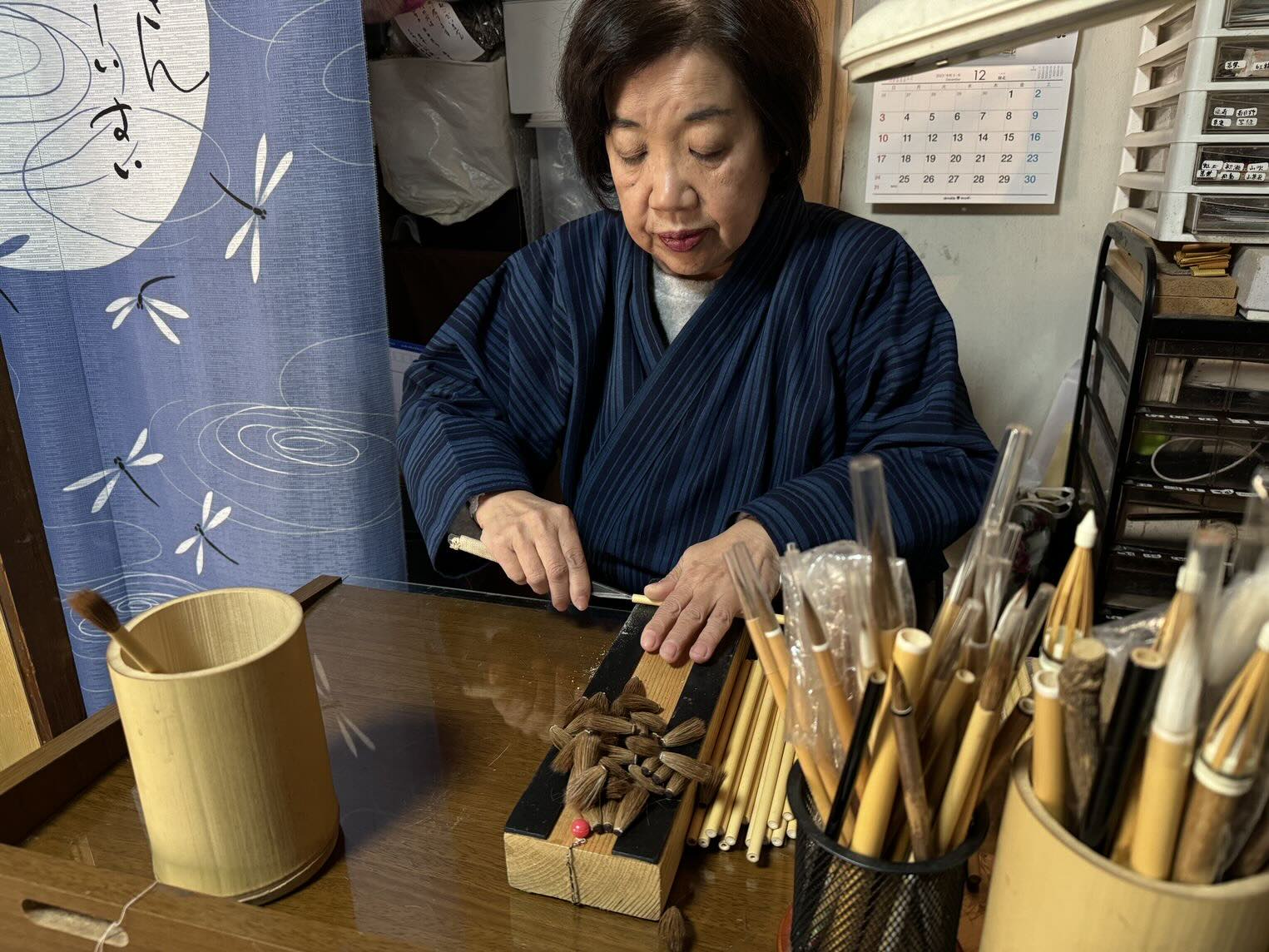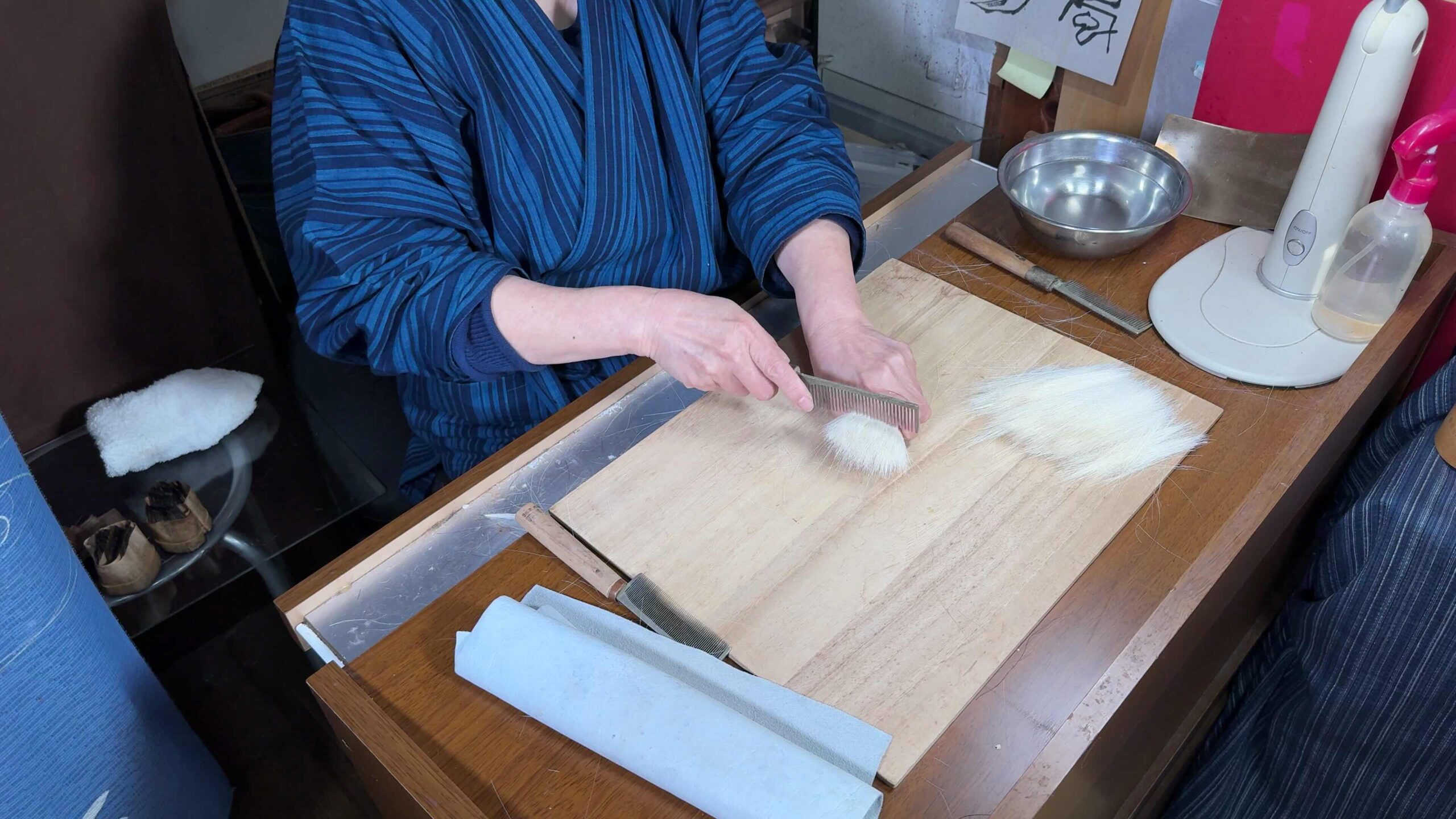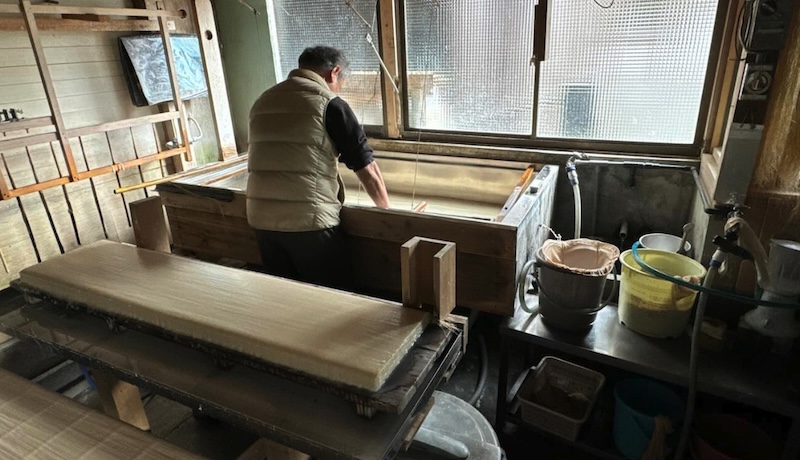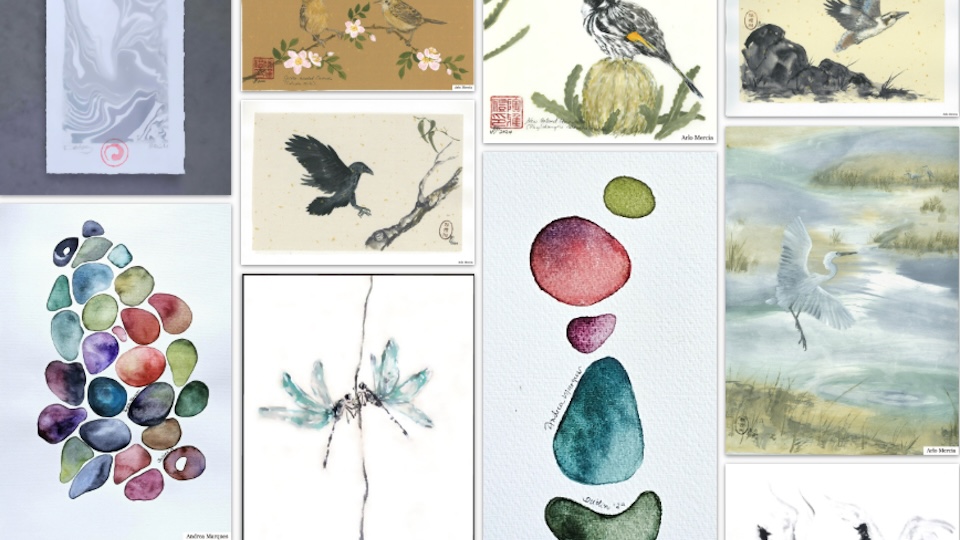
While some traditional crafts are made through division of labor, Nara brushes are unique in that a single artisan is responsible for everything from purchasing the materials to finishing the brush.
Tanaka admits that it is inefficient to do all the processes completely by hand, but she says that this way she can pay more attention to the overall process.
The quality of a brush depends on how well the artisan can select the animal hair that will be used as the material. It is said that it takes more than 10 years to master the process of “Kegumi ( hair assembly )”, which involves sorting the raw materials by use and selecting the ones with the best tips.

Even Tanaka, who has been making brushes for over 35 years, says that this hair assembly process to obtain the best part of the hair is the most difficult.
The “Nerimaze ( kneading and mixing )” of skillfully combining the hair of several different animals, such as squirrels, flying squirrels, weasels, raccoon dogs, sheep, horses, and deer, is a characteristic of Nara brushes.
It is impossible to complete brush-making in a single day. Several processes are carried out over several days.
Process of making a Nara brush
1. Kegumi(毛組):
Sorting hairs
Sort the original hair according to use, and select hairs with only good hair-ends.

2. Nukiage(ぬき上げ):
Combing hairs
Comb through the original hairs to eliminate any cotton-like elements or contaminations.

3. Kemomi(毛もみ):
Rubbing hairs
Heat the hairs with rice husk ashes, then roll the hair in deer skin sheet and rub with hand, which straightens and eliminates the oil in the hair to make them ready.

4. Sakizoroe(先揃え):
Alignment of hairs
Put together the hair-ends to align properly, which will be the pointed end of the brush.

5. Hirame(平目):
Cutting hairs
Soak water in the aligned hairs, and cut the hair to the length of brush.

6. Katazuke(形付け):
Forming brush shape
Add some short/long hairs to form a good corn shape of brush end.

7. Nerimaze(練り混ぜ)
:Mixing hairs
Mix and knead several types of hair many times and at the same time, remove any uneven hairs.

8. Shindate(芯立て):
Making brush core
Add funori ( A kind of Japanese glue produced from agar) glue to the hairs and arrange the brush shape with a special tool called Koma. Then dry the hairs.

9. Jyoumokise(上毛着せ):
Adding hairs
Glue additional cosmetic hairs on the surface of the core hairs, and then dry the hairs. The photo shows the brushes after they have dried. You can see that the brush bristles are made up of two layers.

10. Ojime(お締め):
Tieing hairs
Tie the brush bottom position with hemp yarn, and further tighten using a hot iron, which makes the bottom shape of the brush.

11. Kurikomi(くり込み):
Fixing brush
Cut the inside of brush holder to fit the brush bottom size, and glue the brush bottom to the brush holder.

12. Shiage(仕上げ):
Final adjustment
Soak the core of the brush with funori glue and tie with hemp yarn to arrange the whole brush into a good shape, and then dry the brush.

13. Kansei(完成):
Completion
The brush is now complete. After this, another artisan will carve the brush’s name and other details into the brush’s handle.

Tanaka herself does not like synthetic fiber brushes. She says that polyester fibers do not hold ink well and the ink spills out easily. However, She sometimes mixes synthetic fibers into her brushes to make them more affordable.
According to her, many people find pure animal hair brushes too soft because they have become accustomed to the hardness of brushes made with synthetic fibers.

She says that if you use a new brush with genuine inkstick that has been grinded on a inkpad stone yourself with water, you only need to wash the brush in cold water after you have finished your work. She says that you should not use hot water, as this will damage the glue that holds the bristles together.
The calligraphy works in Japanese Buddhist temples are not so much easy to read as they are full of expression. According to Tanaka, the monks who write these calligraphies often prefer flexible goat hair brushes that can hold a lot of ink. It is difficult to control a brush made from a mixture of weasel tail and deer hair, but that it is possible to draw long, expressive lines with it on the other hand.

(The “Nishi Honganji-bon Sanjūrokunin Kashū” /
West Honganji Temple’s Anthology of Thirty-Six Poets)
In addition, in some Japanese mansions and high-class offices, you may find more legible calligraphy written with a brush made of the hair of a resilient raccoon dog or horse, which draws short, clear lines. Tanaka’s workshop also makes several types of feather brushes that draw unique streaky lines.





